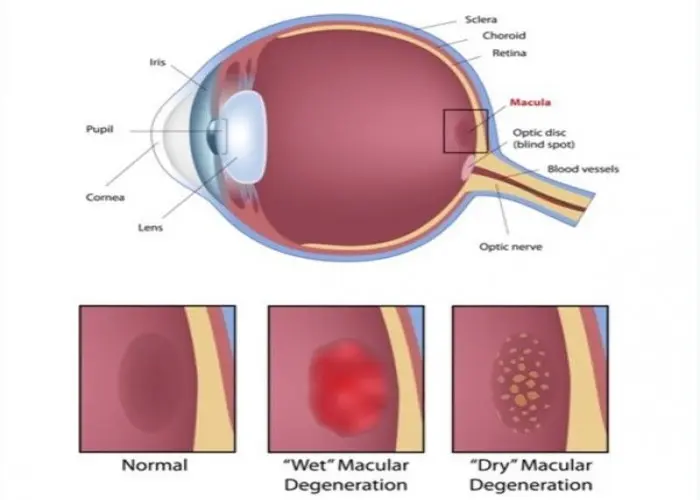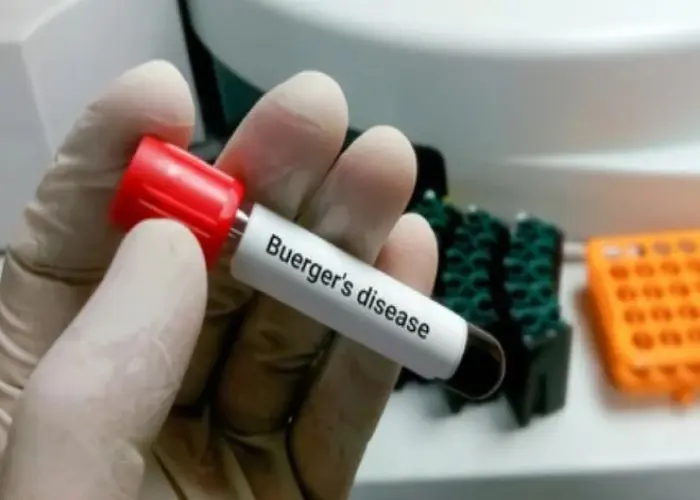 Welcome
Welcome
“May all be happy, may all be healed, may all be at peace and may no one ever suffer."
Food allergy

A food allergy is an immune system response to a particular food that the body mistakenly identifies as harmful. When a person with a food allergy consumes that food, their immune system overreacts and produces antibodies called immunoglobulin E (IgE), which can trigger a range of symptoms.
Symptoms of a food allergy can vary from mild to severe and can include:
- Hives or rash
- Itching or tingling in the mouth
- Swelling of the lips, tongue, or throat
- Shortness of breath or wheezing
- Abdominal pain, nausea, or vomiting
- Diarrhea
- Dizziness or lightheadedness
- Anaphylaxis, a severe and potentially life-threatening reaction that can cause difficulty breathing, a drop in blood pressure, and loss of consciousness.
Some of the most common food allergies include peanuts, tree nuts, shellfish, fish, milk, eggs, wheat, and soy.
If you suspect that you have a food allergy, it is important to seek the advice of a healthcare professional. A doctor can help diagnose a food allergy and develop a management plan to avoid triggers and treat any reactions that occur.
Research Papers
Disease Signs and Symptoms
- Itching
- Fainting (syncope)
- Dizziness (vertigo)
- Nausea or vomiting
- Diarrhea
- Abdomen pain
- Trouble breathing or a feeling of choking
- Nasal congestion
- Swollen tongue
- Swollen lip
- Hives
- Eczema
- Dizziness, lightheadedness or faintness
Disease Causes
Food allergy
When you have a food allergy, your immune system mistakenly identifies a specific food or a substance in food as something harmful. In response, your immune system triggers cells to release an antibody known as immunoglobulin E (IgE) to neutralize the allergy-causing food or food substance (the allergen).
The next time you eat even the smallest amount of that food, IgE antibodies sense it and signal your immune system to release a chemical called histamine, as well as other chemicals, into your bloodstream. These chemicals cause allergy symptoms.
The majority of food allergies are triggered by certain proteins in:
- Crustacean shellfish, such as shrimp, lobster and crab
- Peanuts
- Tree nuts, such as walnuts and pecans
- Fish
- Chicken eggs
- Cow's milk
- Wheat
- Soy
Pollen-food allergy syndrome
Also known as oral allergy syndrome, pollen-food allergy syndrome affects many people who have hay fever. In this condition, certain fresh fruits and vegetables or nuts and spices can trigger an allergic reaction that causes the mouth to tingle or itch. In serious cases, the reaction results in swelling of the throat or even anaphylaxis.
Proteins in certain fruits, vegetables, nuts and spices cause the reaction because they're similar to allergy-causing proteins found in certain pollens. This is an example of cross reactivity.
Symptoms are typically triggered by eating these foods when they're fresh and uncooked. However, when these foods are cooked, symptoms may be less severe.
The following table shows the specific fruits, vegetables, nuts and spices that can cause pollen-food allergy syndrome in people who are allergic to different pollens.
Exercise-induced food allergy
Eating certain foods may cause some people to feel itchy and lightheaded soon after starting to exercise. Serious cases may even involve hives or anaphylaxis. Not eating for a couple of hours before exercising and avoiding certain foods may help prevent this problem.
Food intolerance and other reactions
A food intolerance or a reaction to another substance you ate may cause the same signs and symptoms as a food allergy does — such as nausea, vomiting, cramping and diarrhea.
Depending on the type of food intolerance you have, you may be able to eat small amounts of problem foods without a reaction. By contrast, if you have a true food allergy, even a tiny amount of the food may trigger an allergic reaction.
One of the tricky aspects of diagnosing food intolerance is that some people are sensitive not to the food itself but to a substance or ingredient used in the preparation of the food.
Common conditions that can cause symptoms mistaken for a food allergy include:
- Absence of an enzyme needed to fully digest a food. You may not have adequate amounts of some enzymes needed to digest certain foods. Insufficient quantities of the enzyme lactase, for example, reduce your ability to digest lactose, the main sugar in milk products. Lactose intolerance can cause bloating, cramping, diarrhea and excess gas.
- Food poisoning. Sometimes food poisoning can mimic an allergic reaction. Bacteria in spoiled tuna and other fish also can make a toxin that triggers harmful reactions.
- Sensitivity to food additives. Some people have digestive reactions and other symptoms after eating certain food additives. For example, sulfites used to preserve dried fruit, canned goods and wine can trigger asthma attacks in people with sensitivity to food additives.
- Histamine toxicity. Certain fish, such as tuna or mackerel, that are not refrigerated properly and that contain high amounts of bacteria may also contain high levels of histamine that trigger symptoms similar to those of food allergy. Rather than an allergic reaction, this is known as histamine toxicity or scombroid poisoning.
- Celiac disease. While celiac disease is sometimes referred to as a gluten allergy, it does not result in anaphylaxis. Like a food allergy, celiac disease does involve an immune system response, but it's a unique reaction that's more complex than a simple food allergy.
- This chronic digestive condition is triggered by eating gluten, a protein found in bread, pasta, cookies, and many other foods containing wheat, barley or rye.
- If you have celiac disease and eat foods containing gluten, an immune reaction occurs that causes damage to the surface of your small intestine, leading to an inability to absorb certain nutrients.
Disease Prevents
Food allergy
Early exposure
Early introduction of peanut products has been associated with a lower risk of peanut allergy. In a recent study, high-risk infants — such as those with atopic dermatitis or egg allergy or both — were selected to either ingest or avoid peanut products from 4 to 6 months of age until 5 years of age.
Researchers found that high-risk children who regularly consumed peanut protein, such as peanut butter or peanut-flavored snacks, were around 80% less likely to develop a peanut allergy.
Before introducing allergenic foods, talk with your child's doctor about the best time to offer them.
Taking precautions
Once a food allergy has already developed, the best way to prevent an allergic reaction is to know and avoid foods that cause signs and symptoms. For some people, this is a mere inconvenience, but others find it a greater hardship. Also, some foods — when used as ingredients in certain dishes — may be well hidden. This is especially true in restaurants and in other social settings.
If you know you have a food allergy, follow these steps:
- Know what you're eating and drinking. Be sure to read food labels carefully.
- If you have already had a severe reaction, wear a medical alert bracelet or necklace that lets others know that you have a food allergy in case you have a reaction and you're unable to communicate.
- Talk with your doctor about prescribing emergency epinephrine. You may need to carry an epinephrine autoinjector (Adrenaclick, EpiPen) if you're at risk of a severe allergic reaction.
- Be careful at restaurants. Be certain your server or chef is aware that you absolutely can't eat the food you're allergic to, and you need to be completely certain that the meal you order doesn't contain it. Also, make sure food isn't prepared on surfaces or in pans that contained any of the food you're allergic to.
- Don't be reluctant to make your needs known. Restaurant staff members are usually more than happy to help when they clearly understand your request.
- Plan meals and snacks before leaving home. If necessary, take a cooler packed with allergen-free foods when you travel or go to an event. If you or your child can't have the cake or dessert at a party, bring an approved special treat so no one feels left out of the celebration.
If your child has a food allergy, take these precautions to ensure his or her safety:
- Notify key people that your child has a food allergy. Talk with child care providers, school personnel, parents of your child's friends and other adults who regularly interact with your child. Emphasize that an allergic reaction can be life-threatening and requires immediate action. Make sure that your child also knows to ask for help right away if he or she reacts to food.
- Explain food allergy symptoms. Teach the adults who spend time with your child how to recognize signs and symptoms of an allergic reaction.
- Write an action plan. Your plan should describe how to care for your child when he or she has an allergic reaction to food. Provide a copy of the plan to your child's school nurse and others who care for and supervise your child.
- Have your child wear a medical alert bracelet or necklace. This alert lists your child's allergy symptoms and explains how others can provide first aid in an emergency.
Disease Treatments
The only way to avoid an allergic reaction is to avoid the foods that cause signs and symptoms. However, despite your best efforts, you may come into contact with a food that causes a reaction.
For a minor allergic reaction, prescribed antihistamines or those available without a prescription may help reduce symptoms. These drugs can be taken after exposure to an allergy-causing food to help relieve itching or hives. However, antihistamines can't treat a severe allergic reaction.
For a severe allergic reaction, you may need an emergency injection of epinephrine and a trip to the emergency room. Many people with allergies carry an epinephrine autoinjector (Adrenaclick, EpiPen). This device is a combined syringe and concealed needle that injects a single dose of medication when pressed against your thigh.
If your doctor has prescribed an epinephrine autoinjector:
- Be sure you know how to use the autoinjector. Also, make sure the people closest to you know how to administer the drug — if they're with you in an anaphylactic emergency, they could save your life.
- Carry it with you at all times. It may be a good idea to keep an extra autoinjector in your car or in your desk at work.
- Always be sure to replace epinephrine before its expiration date or it may not work properly.
Experimental treatments
While there's ongoing research to find better treatments to reduce food allergy symptoms and prevent allergy attacks, there isn't any proven treatment that can prevent or completely relieve symptoms.
One treatment currently being studied as a treatment for food allergy is oral immunotherapy. In this treatment, small doses of the food you're allergic to are swallowed or placed under your tongue (sublingual). The dose of the allergy-provoking food is gradually increased.
The U.S. Food and Drug Administration recently approved the first oral immunotherapy drug, Peanut (Arachis hypogaea) Allergen Powder-dnfp (Palforzia), to treat children ages 4 to 17 years old with a confirmed peanut allergy. This medication isn't recommended for people with uncontrolled asthma or certain conditions, including eosinophilic esophagitis.
Disease Diagnoses
Disease Allopathic Generics
Disease Ayurvedic Generics
Disease Homeopathic Generics
Disease yoga
Food allergy and Learn More about Diseases

Dry macular degeneration

Genital herpes

Convergence insufficiency

Listeria infection

Buerger's disease

Thalassemia

Golfer's elbow

Antisocial personality disorder
food allergy, খাদ্য এলার্জি
To be happy, beautiful, healthy, wealthy, hale and long-lived stay with DM3S.
